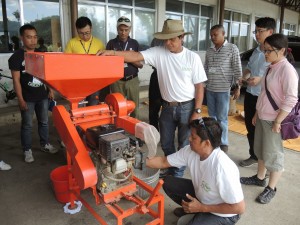An estimated 21 million red-billed quelea (Quelea quelea) birds are ravaging rice, sorghum, millet, and wheat fields in eight regions in the southern highlands, central, and lake zones of Tanzania.
The invasion is threatening other regions in the country. The pest has also been reported in Botswana and Zimbabwe farming areas.
The average quelea bird eats around 10 grams of grain per day and a flock of two million can devour as much as 20 tons of grain in a single day. With an estimated adult breeding population of at least 1.5 billion.
Read the story @FAO
More on rice pests affecting rice production in Africa:
Trouble from the sky
Queleas—often referred to as “feathered locusts”—are probably the most destructive birds in the world. In Africa, they have been a granivorous pest for thousands of years, as seen from the images in pyramids showing farmers using whips to scare them off. These birds can easily wipe out the whole rice crop and they are very difficult to manage because they move quickly from one area to the next.
Food security under attack: Africa’s struggle against parasitic weeds
Parasitic plants infest other plants to extract water, nutrients, and metabolites, causing great damage to their hosts. When these plants invade food crops, they turn into ferocious weeds. We overlaid a map of rainfed rice production areas with parasitic weed observation data retrieved from public herbaria to visualize the regional distribution in Africa of the four most important species: Striga hermonthica, S. asiatica, S. aspera, and Rhamphicarpa fistulosa.
Striga species occur in at least 31 countries, whereas R. fistulosa threatens rice production in at least 28 countries with rainfed rice systems. Together, they invade an estimated 1.34 million hectares of rainfed rice area in Africa. The total economic loss inflicted by parasitic weeds in rice in Africa is estimated at USD 200 million, with an annual increase of USD 30 million.
Africa’s rice farmers lose millions of dollars to parasitic weeds
Smallholder farmers in the continent are losing half a million tons of rice worth about USD200 million because of parasitic weeds every year. This is roughly equivalent to the annual rice consumption of Liberia, a low-income country, which heavily relies on rice imports. If the rice lost due to the parasitic weeds had been saved, it would have been enough to feed 4.5 million people, the total population of Liberia, for a year.







